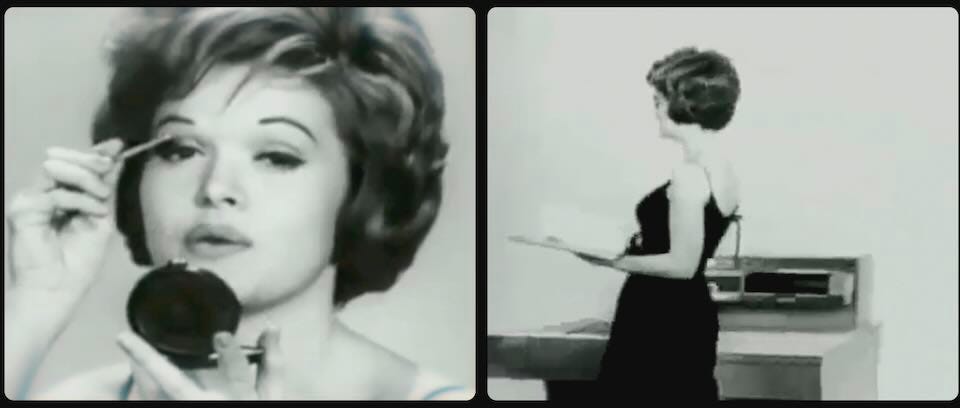Circular Logic: Back to Everything
(2023)
At two and a half minutes, Back to Everything, a new short by Meg Case and Brad Porter, jams a great many ideas and images into a very small amount of time, creating a breathtakingly fast visual/verbal trip, a multi-faceted look at the ideas of replication, intimacy and borderlines which explodes across the screen in a proliferation of interconnected fragments which are sure to occupy your mind for much longer than the video’s short duration.
The video uses found footage from a variety of sources, including a loopy early ad for the new invention of the office photocopier, an ad which deliberately mixes up the sexual allure of a secretary with her ability to make perfect copies. Back to Everything is in a double projection format, frequently swapping images from left to right, and features multiple visual riffs on the idea of copying: stereoscopic images, video feedback, images of cells splitting or of printing presses churning out copy. A man and woman are seen occasionally, their caresses and embraces somehow impersonal, as if we’re watching an ad which is selling the idea of human reproduction.
The video is accompanied by a chorus reciting a rapid-fire text, a parade of fragmentary ideas which flash by so quickly that they are almost subliminal: “excess baggage, sold for cheap,” “manufactured outcomes are dead on arrival,” “you could press into the tissue and close the gap, which was always nothingness.”
These phrases dance around the idea of a “gap of nothingness” which surrounds categories, and the erotic pull of the desire to touch, to connect, to cross the gap. The endless replication of images, ideas, thoughts, attitudes, threatens to make both individual consciousness and society circular and meaningless. Everything constantly feeds back into everything, negating the possibility of change, of agency, of making a difference. The advent of digital media and the internet only serves to super-charge the process: in a world where any human experience is instantly flattened into endlessly repeated memes, the outcomes are indeed “dead on arrival.”
These ideas are examined, both visually and verbally, at a high level abstraction, giving the work a poetic resonance, and these fragments have echoes on many levels of experience: bodily, sexually, socially. At the same time, the reckless speed of images and words rushes us past each individual iteration of the idea, so that we become swamped in the sheer, physical exhilaration of mental movement, and this exhilaration seems to be one and the same with the seductive quality of endlessly replicated images.
For such a short video, there’s a lot to think about. When mulling over the images and ideas which have tumbled across the screen, you’re likely to feel that every image in the video circles back on itself. This circularity is, perhaps, the real subject of the piece.
My articles on experimental film are freely available to all, but are supported by monthly and annual donations from readers. Please consider becoming a paid subscriber to support my work. Thank you.




